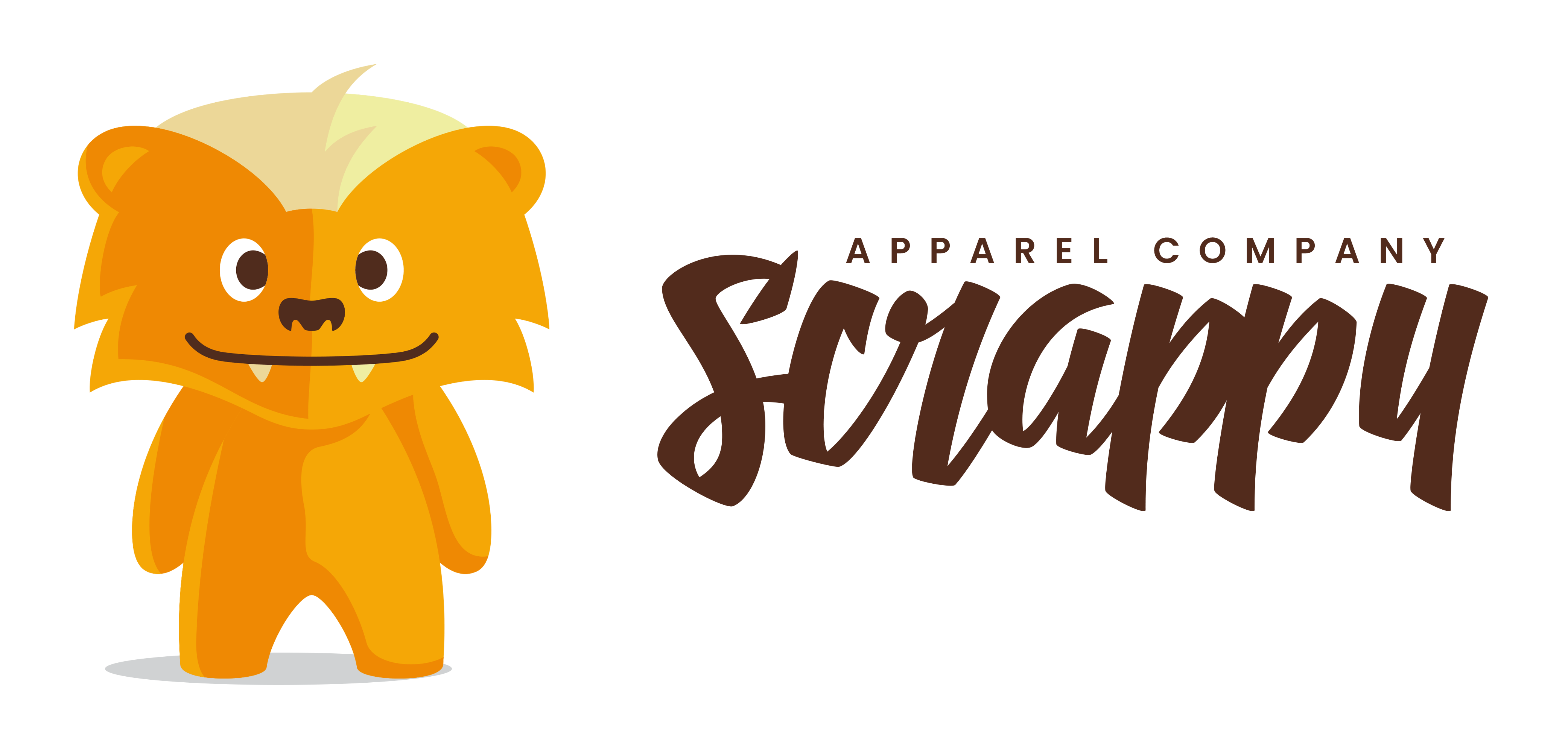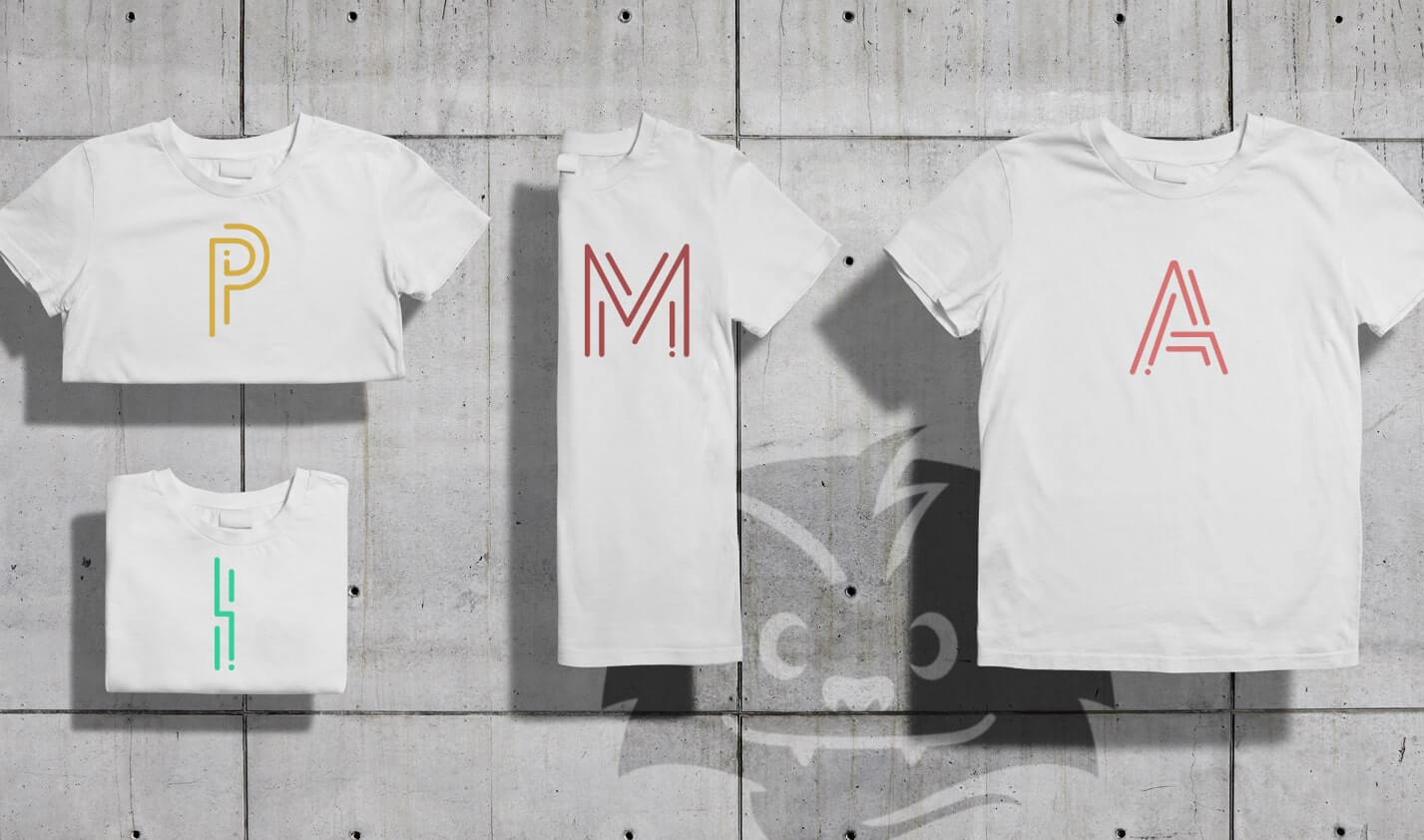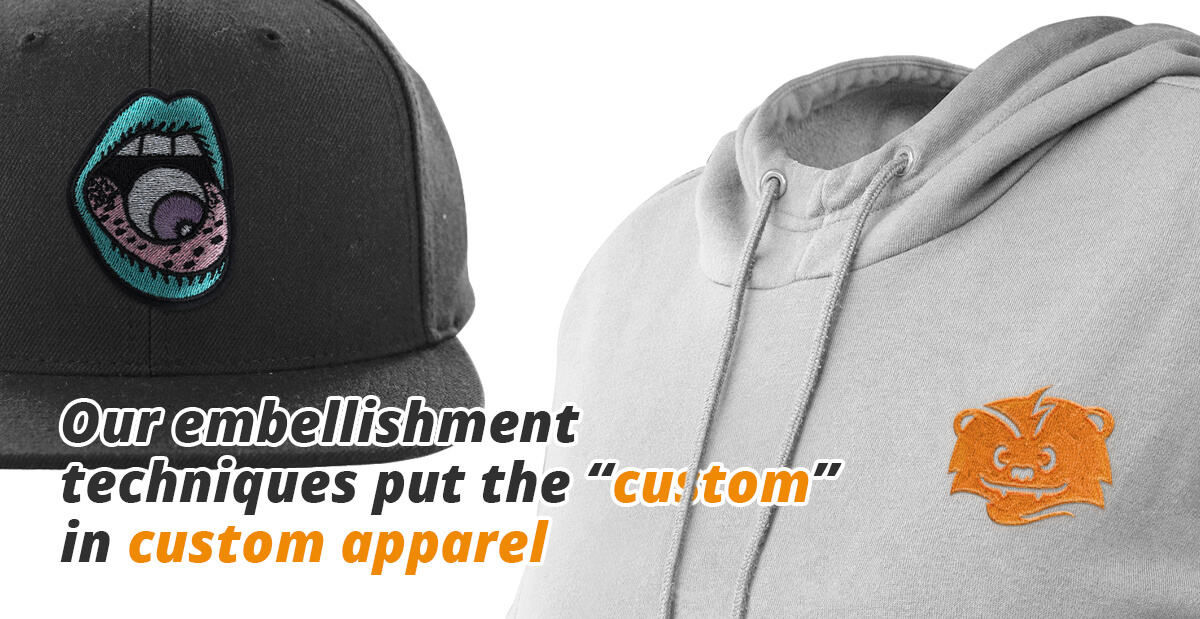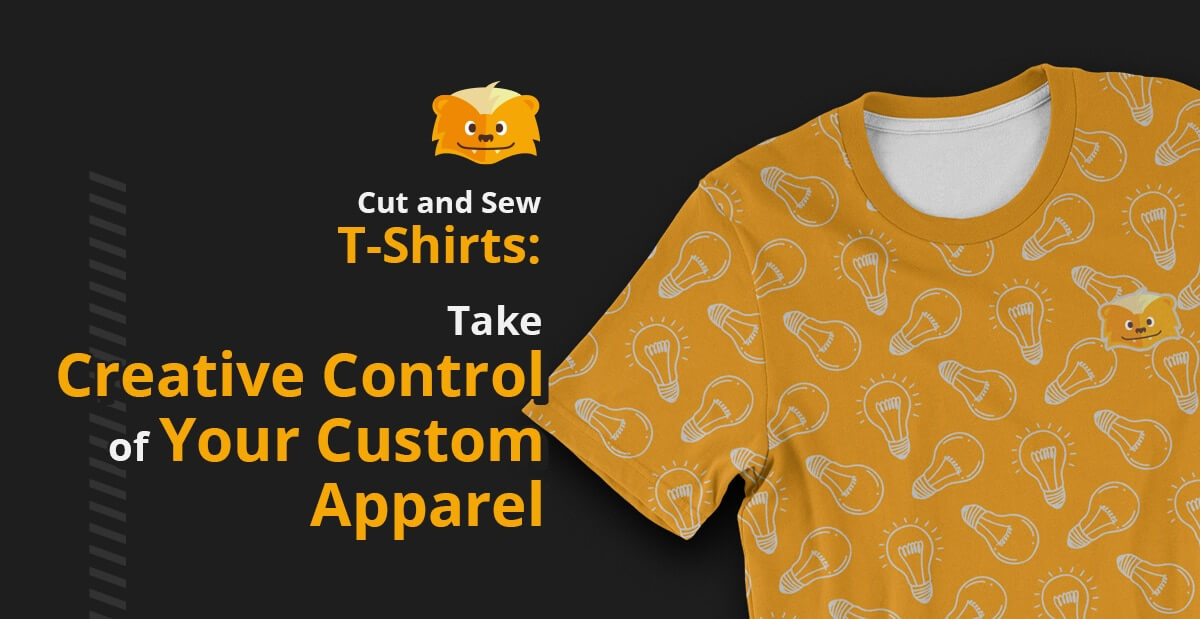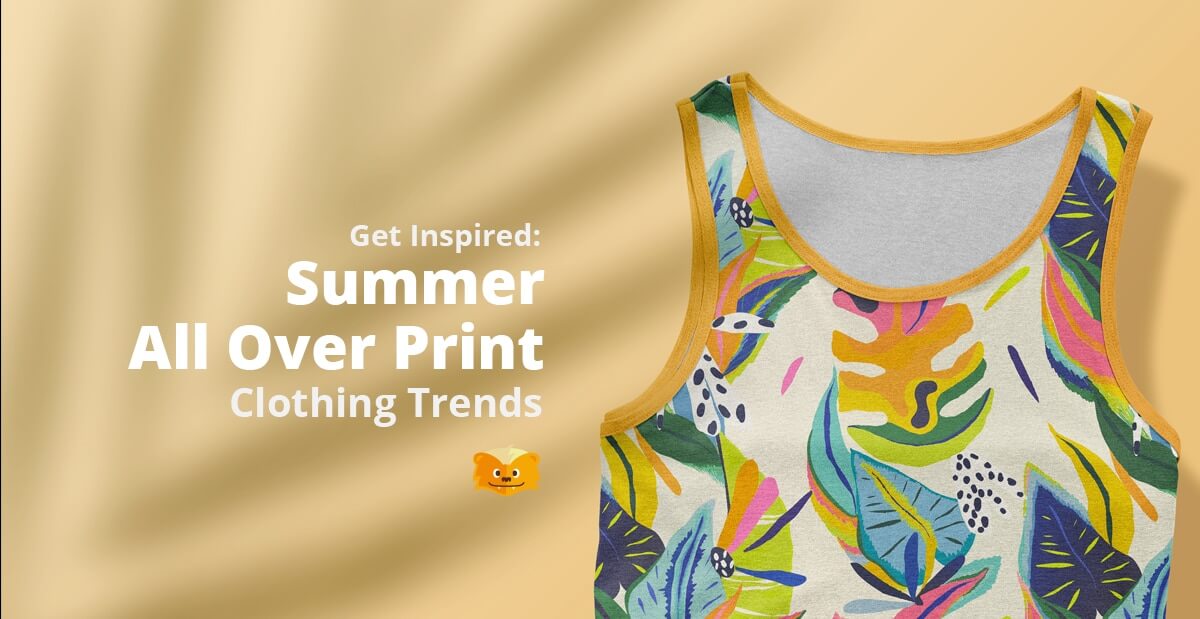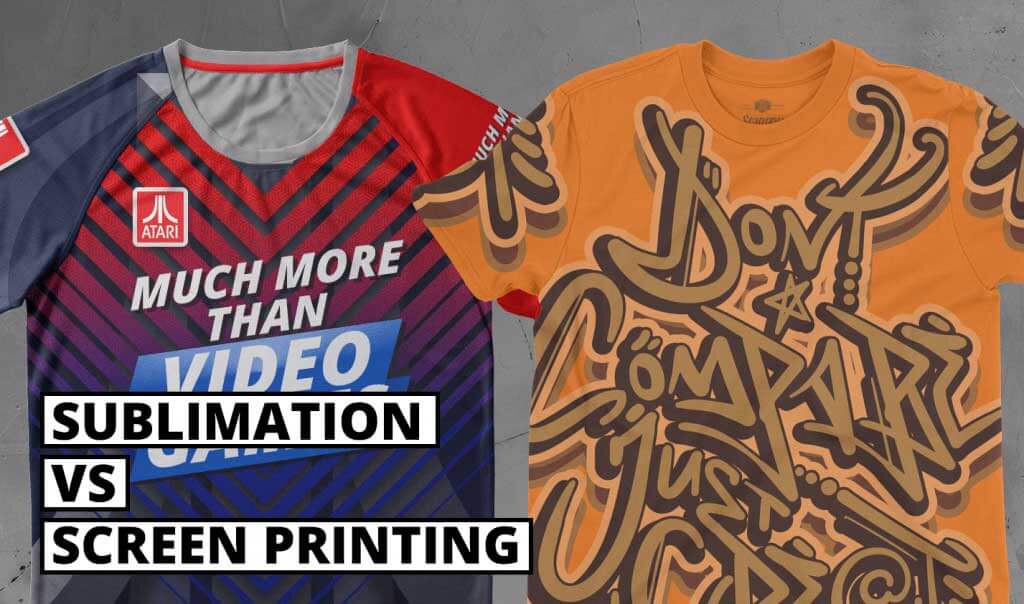
“Screen printing” is often used as an umbrella term when it comes to printing graphics on t-shirts and other apparel. However, screen printing is actually just one specific method, and there are alternatives to consider if you’re looking for an all-over print. Here’s a comparison of screen printing and another common method known as sublimation printing.
All Over Sublimation Printing
• The minimum order size for a sublimation printing job is 12 pieces.
• No color restrictions, use as many as you desire.
• Print realistic images.
• Ink never fades, cracks, or peels.
Sublimation ink is a special process that requires a sublimation printing machine using special transfer paper and ink. Sublimation printing is a popular alternative to inkjet transfers. Whereas inkjet uses a carrier sheet to transfer ink to the top of the shirt, sublimation ink becomes part of the garment.
The process starts with your sublimation transfer paper, which is coated in ink. When that transfer paper is pressed onto a garment, it gets heated up to a specific point and the ink then transforms into a gas. The heat serves two purposes in this process, first to transform the ink into a gas and second to open the pores of the fabric you’re pressing the ink into.
After heating, the sublimation printer will continue pressing the transfer paper onto the garment. Pressure will then be released and the garment will cool down. This allows the sublimation ink to return to its solid state while the pores of the garment close, capturing the ink within the garment’s polymer coating. It may sound complex, but there are many advantages to sublimation printing.
Advantages of Sublimation Printing
By far, one of the biggest advantages of sublimation printing is that, when the process is completed properly, the image you transfer will never fade or disappear. As long as the substrate (the garment itself) isn’t damaged, it will always look brand new.
One great advantage of sublimation printing is that the design scaling adjusts in proportion to each shirt size. This helps to create a consistent look and placement across all shirt sizes.
Another advantage is that sublimation printing results in an extremely flat design, making for a smooth feel. It will be soft to the touch since the ink has bonded with the substrate and isn’t just sitting on top. Being that comfort is a major consideration for consumers, this helps sublimation printing stand out.
With this process, you can also make full-color transfers, which is a major advantage over traditional screen printing as you won’t have to go through extra steps of preparing a new screen for each color in your design.
Limitations of Sublimation Printing
Due to the science of how sublimation printing works, it can only be used on 100% polyester apparel or on garments that have a special polymer coating. Another limitation to keep in mind is that sublimation printing uses transparent inks. This means it works best on white or light-colored substrates. Given that the same set of screens is used for all shirt sizes in your order (unless you place separate orders for each shirt size) specific design placement and proportions tend to vary across sizes.
All Over Screen Printing
• The minimum order size for a screen printing job is 144 pieces.
• Print up to 6 spot colors, usually limiting designs to 1-3.
• Highly durable designs using a traditional method.
• Ideal for high volume orders.
Alongside modern methods like digital printing, some think of screen printing as “old school,” but this traditional method is still very much alive and well in the industry–and for good reason. Screen printing works for a number of applications, but the biggest barrier is in the setup.
Screen printing uses actually screens to get a design onto a garment. When a design is prepared, each color of the design is separated into layers and a screen is created for each corresponding color. That means, for a design with 6 colors, 6 separate screens must be made. The colors are then printed layer by layer, which makes for quite a time-consuming process.
Still, most of the work is in the initial setup since it can take a substantial amount of time to design the different screens. That’s why most screen-printed designs are limited to 6 colors, but generally max out between 1 and 3, thus making screen printing ideal for simple designs. Of course, once the initial setup is complete, it’s easy to use screen printing to create shirts at a large volume.
Advantages of Screen Printing
The flexibility screen printing offers is simply unmatched. You can use the screen printing method for almost any surface, as long as it’s flat. This also gives you plenty of versatility when it comes to fabric for your apparel projects. Moreover, if you plan to print a lot of the same design, screen printing is definitely going to be one of your most cost-effective options. The more you print, the lower the cost will be for each garment.
The process is also ideal for simpler designs that don’t use a lot of colors or have a lot of small details. This makes it a great choice for logos, names, and graphics but not a great choice for photography or other highly intricate designs. However, you can achieve gradients with screen printing and the right technique will lead to crisp, sharp designs.
Plus, screen printing results in highly durable designs compared to heat pressed and digital designs. Since screen printing lays down thick layers of ink that the material then absorbs, screen printing can withstand direct sunlight and years of wear.
Limitations of Screen Printing
The biggest limitation of all over screen printing is the high production volume required to offset the setup costs. If you choose to print in low quantities, you’ll simply end up paying too much per garment, which is why Scrappy Apparel Company has a minimum order size of 144 pieces.
Another consideration is the time it takes to set up the screens, which can lengthen the turnaround time for your order. Screen printing projects may take longer to deliver than other printing methods will. This, compared with the limited degree of detail and limited colors, leads many customers to consider our other methods of printing.
Still have questions? We’d be happy to answer them and give you specific suggestions based on your project. Just reach out to the Scrappy Apparel team by clicking here.
